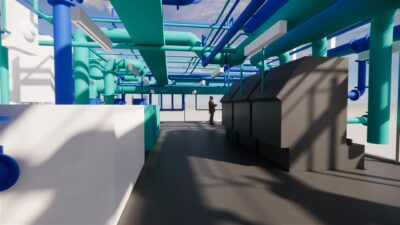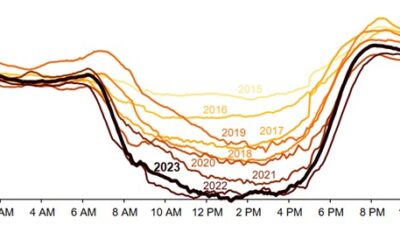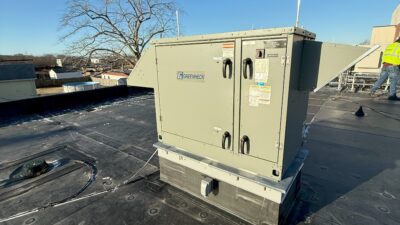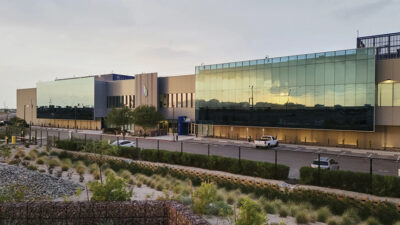No longer a fringe concept, engineering green is now a critical business and economic issue.
No longer a fringe concept, engineering green is now a critical business and economic issue. Environmentally friendly products help organizations become more efficient and drive significant cost savings. More businesses and institutions consider incorporating green technologies and design methods into new buildings and expansion projects.
Some institutions can meet their goals through specific products and solutions, implemented on a project basis. For others, sustainability is a long-term proposition, requiring broader strategic consultation.
Major organizations and institutions are embracing the idea of going green and making the commitment to become more energy-efficient. Superior green building products are important to this effort, but so is a strategic range of solutions designed to meet unique challenges. Collaborative, long-term relationships offer an ideal opportunity to develop those strategic solutions. These collaborations will result in significant cost savings and enhanced reputations among key stakeholders.
Airport flies green
In August 2001, Delta Air Lines reached an agreement with the Massachusetts Port Authority (Massport) to redevelop Terminal A at Boston Logan International Airport—New England’s largest airport. As an added feature to redeveloping the terminal, Massport was to transform the 686,000 sq ft into the first truly sustainable structure of its kind and to achieve a USGBC LEED rating.
“As we finalized our investigations of what would be required to complete this major project, it became apparent that our power systems would need state-of-the-art solutions,” said John MacDonald, PE, senior electrical engineer for the project, TMP Consulting Engineers, Boston. “We turned to Eaton’s Electrical Group because of its reputation in the electrical industry.”
Because of the length of the buildings (the Satellite Building was 1,100 ft long), the buildings were split in half electrically, with a double-ended substation using cast-coil transformers to serve each half.
Eaton’s Electrical Group offered a solution that would not only provide Massport lighting controls, but also measure the airport’s energy usage and ultimately reduce energy consumption. Eaton provided Massport with its Pow-R-Command 100. This system controls individual loads, and switches them through a network of individual panels. These are influenced by BAS, wall switches, time schedules, and software, and through telephone commands.
By scheduling the lights to turn off when the terminal is not in use and using daylight-harvesting controls, the network system reduces light energy consumption at the terminal by as much as 30%.
As a result of Eaton’s energy control system, Terminal A at Boston Logan Airport met the Massachusetts Energy Code, which mandates that lighting controls be used on all buildings to ensure lights are scheduled off at night and lighting is off in unoccupied rooms.
A green education
Eaton and the University of Notre Dame, South Bend, Ind., have had a long-standing relationship. Based on this relationship and past collaborations, it was a natural progression for the university to discuss projects with Eaton and explore how the two organizations could work together to solve the university’s energy-related challenges.
This particular challenge: to start and control a 1,750 hp fan motor for a large-scale wind tunnel for the Aerospace and Mechanical Engineering Dept. of the College of Engineering. Planning began in 2006, orders started in 2007, and installation began in early 2008.
Because this installation is part of a major research project, the concern was the ability to start and control such a large load without adversely impacting the university’s electrical distribution system, and providing the researchers with the ability to control the experiment at various speeds. Eaton provided its medium voltage drive that instructs the motor to start and operate at variable speeds and loads without stressing the university’s electrical distribution system, while also minimizing motor wear and tear. By also using Eaton PowerNet controls, the university Utilities Dept. has been able to manage the operation of this significant load to avoid undesirable power demands and associated penalty costs.
During installation, Eaton engineers needed to find a way to control the operation of this load so its demand would not adversely affect the university’s typical on-peak demand.
Eaton installed its PowerNet system tin order to place constraints on the operation and loading of the VFD during on-peak times. The electrical engineers also used this system to ensure that the university’s electrical system operators would have to be contacted to enable the VFD to go above a prescribed testing speed (to restrict load).
Installation and testing has been ongoing since late 2007. The final pieces of the wind tunnel currently are being installed and are expected to achieve full operation in fall 2008.
As the University of Notre Dame and Eaton continued to work together on a daily basis, the university’s chief electrical engineer, Tim Golichowski, and Eaton’s sales team leader, Bryan McClure, discovered a failed application of an adjustable frequency drive at the school’s DeBartolo Classroom Building. After studying the proper application for this equipment and considering the most energy-efficient option, Eaton provided its SVX adjustable frequency drive, and the application was up and running.
The two organizations, in cooperation with BSA Life Structures, Indianapolis, have collaborated more broadly on LEED initiatives for the university’s new Stinson-Remick Multidisciplinary Engineering Building. The university’s architect, Doug Marsh, and the director of utilities, Paul Kempf, brought the three groups together to focus on opportunities for the DeBartolo Classroom Building.
The university was seeking opportunities for enhanced lighting control, metering, and verification, along with HVAC equipment operations. New applications for the facility include Eaton’s SVX drives for various air handling and heavy mechanical operation applications, Pow-R-Command for lighting applications, Power Xpert metering, and IQ220 and IQ Energy Submeter II panel mounted meters.
Eaton has assisted the university in developing the system architectures and control strategies that will allow these products to more efficiently control the facility and provide educational opportunities for the faculty, students, and visitors to the facility.
The combined application of these Eaton solutions may contribute to eight LEED credit categories and two prerequisites (see Table 1).
In addition to contributing to LEED certification, the Power Xpert metering and software equipment also help educate Notre Dame students. Energy information provided via the Power Xpert meter will be displayed in the lobby of the Stinson-Remick Engineering building and in the facility’s Learning Center, where students and faculty can study and experiment with their energy usage in real time, and survey historical data. Students will take an active role in promoting the energy efficiency of the building.
Eaton also agreed to develop unique educational content for a Power Quality Lab in the engineering building. The goal is to provide hands-on training with state-of-the-art equipment.
LEED CREDIT
DESCRIPTION
EATON APPLICATION
SSCredit 8
Light pollution reduction
Control interior lighting for contribution to reduce light spilling out of windows
EAPrereq1
Fundamental commissioning of the
Use of lighting controls, building energy systems VFDs, and metering as commissioning tool
EAPrereq 2
Minimum energy performance
Use of lighting controls and VFDs for energy efficiency
EACredit 1
Optimize energy performance 10.5%
Use of lighting controls and VFDs for energy in new buildings, or 3.5% in existing efficiency building renovations
EACredit 3
Enhanced commissioning
Use of lighting controls, VFDs, and metering as commissioning tool for commissioning electrical, lighting, and HVAC systems
EACredit 5
Measurement & verification
Metering energy usage
EQCredit 2
Increased ventilation
Use of VFDs to manage fan speed and ventilation rate
EQCredit 6.1
Lighting, systems control
Lighting control applications



